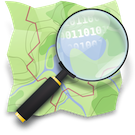With the upcoming API 0.6 the technical team have made several discoveries of the overall performance of Ruby, MySQL and the code used to run OSM. They’ve found that with MonetDB and the cherokee webserver we can speed things up considerably, and reduce the CPU count. This system has been reliably tested by Tom Hughes and Matt Amos as hundreds of times faster than the current setup. The speed increases are incredible to the point where the DB almost seems to know map edits before they happen and the HTTP and DB transactions tend to 0ms over time, and 0% of the XML API transaction itself.
Of course partly this is because it’s been re-written in C++ and all clients, particularly potlatch, now will be using the new binary protocol. Richard Fairhurst, the potlatch dictator, has been in close and positive contact with the authors of the new system to make this shift and has been working openly to encourage new developers to help rework potlatch. Improvements will include basic usability.
Unfortunately some of the work has pushed back the API switchover and a working group has been set up to decide on a date to announce the new date for switchover.
To counterbalance this bad news however, there is a silver lining – the license process has completed. From today the OSM database is available under the NDL [1], a variant of the original ODbL and closely similar in purpose and intent of the Duke Nukem Forever release process, which has shone industry-wide as an example of best practices.
[1] – NilDesperandumLicense



